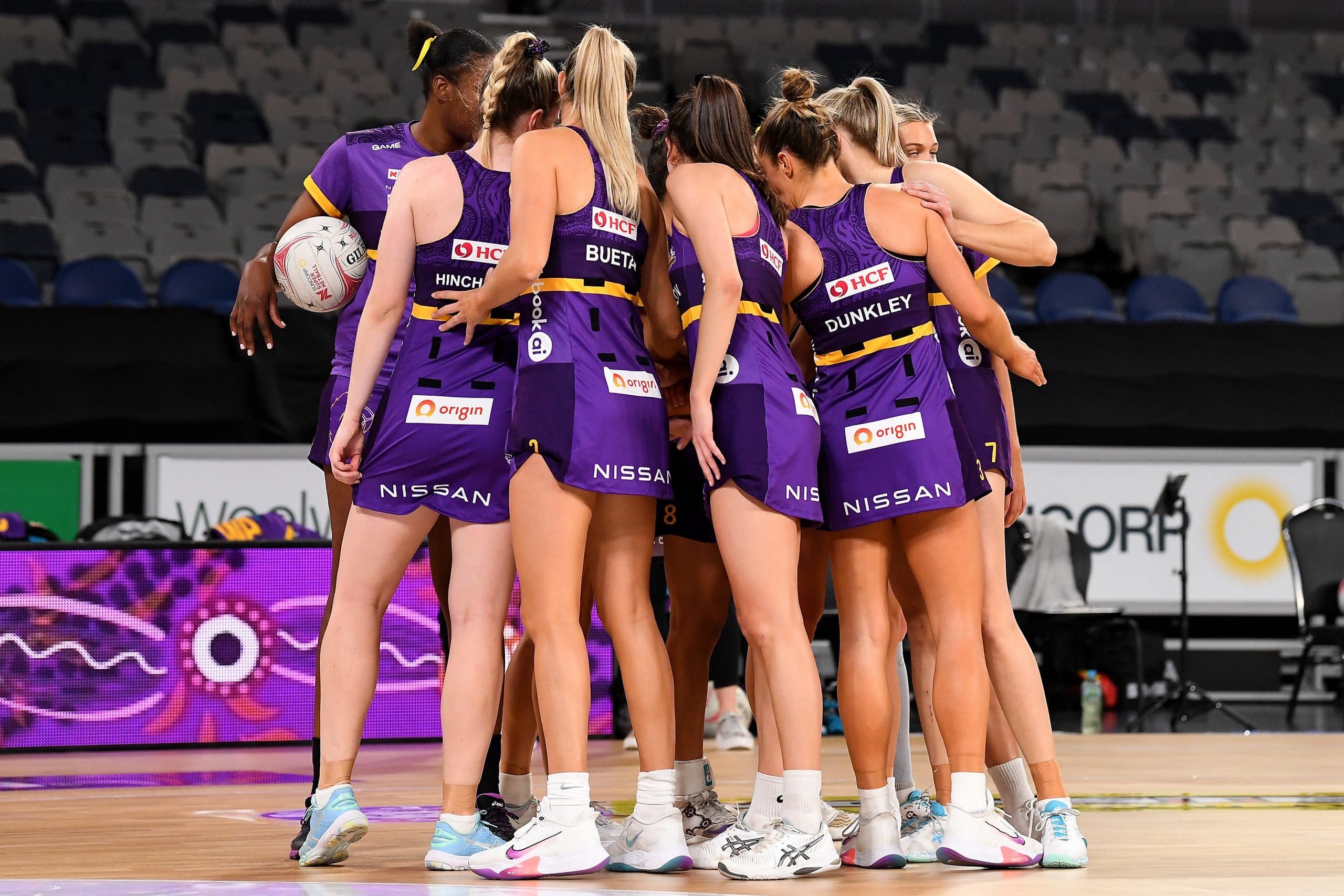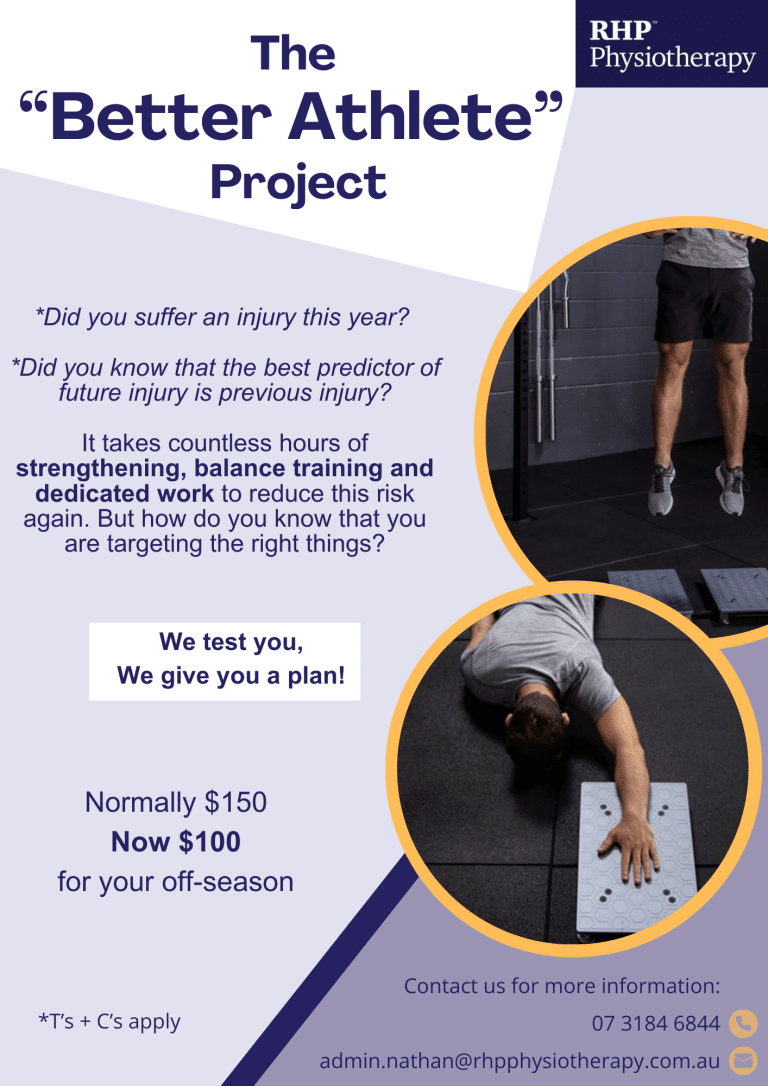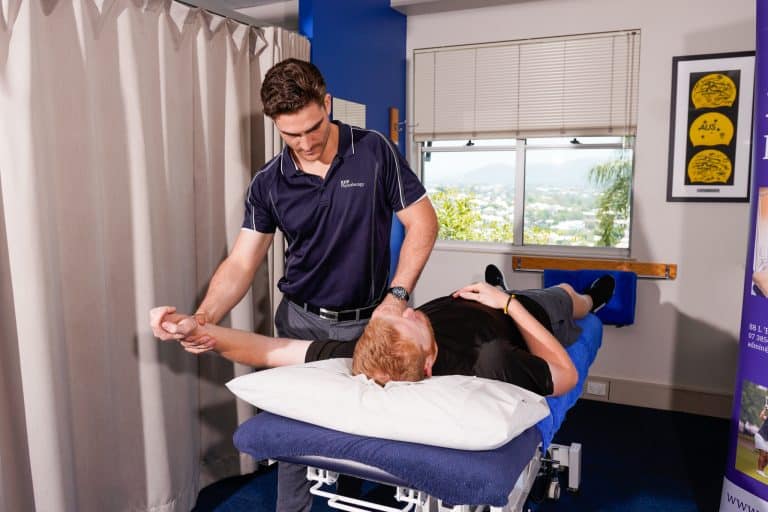Injury or Sports Screening
Better Athlete Project
We are now offering sports screening and injury prevention screening appointments for all athletes and teams!

Knee pain and injury results in the greatest amount of time away from games in many sports. This is typically due to major knee injuries. However, some knee pain may come about without a known cause. There may not be a particular injury event. Some knee pain is caused by a combination of:
- Overuse
- Inefficient biomechanics
- Strength deficits
This type of knee pain may happen at the front of the knee and may even feel good after warming up. This can, however, impact how well you play and effect the team. The good news is that this type of injury can often be managed without needing to stop playing!
For more information, read our blog.
Ankle sprains are common in most team sports. A mild ankle injury will often take only two weeks to return to the game, however more significant injuries can take up to six weeks. High ankle sprains may even take a whole lot longer.
Ankle injuries occur when the foot turns inwards too quickly. This will sometimes happen when stepping on the foot of another player, landing awkwardly, changing direction or from direct impact with an opponent. The ligaments connecting the bones together around the outer side of the ankle can be damaged. Occasionally the bone and muscle or tendon can also be damaged.
It is vey important that the severity of these injuries are well assessed. A low ankle sprain, the most common, might seem simple enough, but it is the high ankle sprain that can be missed. These injuries often take longer to heal and lead to young athletes losing interest in the sport thinking they will never recover.
Read more about ankle injuries in our blogs:
Knee injuries occur more often in Netball than any other sport, but they occur in Football/ Touch Footy/ AFL and most land based team sports.
Acute and severe knee injuries most often involve the ACL (anterior cruciate ligament) or Meniscus, but can also involve the ligaments on the side of the knee, the LCL (lateral collateral ligament) or MCL (medial collateral ligament).
A typical ACL injury occurs with a heavy landing or change of direction. There might be a sound, often some pain and athletes will often have an innate awareness that they have injured their knee significantly.
These injuries often will take a minimum of nine months before athletes can return to the court. If these can be prevented, there would be a lot of happier coaches and athletes!
Read more about ACL injuries.
Shin splints involves pain towards the inner side of the lower leg. This is accurately described as Medial Tibial Stress Syndrome (MTSS).
MTSS can be complex, just like knee pain above. There is often a combination of reasons that someone may suffer from shin splints, including:
- Change in surface
- Change in footwear
- Increased training
- Recent time off training
- Strength deficits of the calf and hips
This is fortunately another injury that can be managed without the need to stop playing. It will, however, impact on your performance and your team if not managed well. Plus, if left to continue pushing through, the injury can get worse! The stress can extend into the bone and become a stress fracture, but only in rare cases.
Read more about shin splints.
Although muscle injuries might seem less severe than those above, did you know that a history of one injury can increase your future risk 7 fold?
During sprinting, muscles of the front of the thigh (Quadriceps) and the back of thigh (Hamstrings) are common places to suffer an injury.
With appropriate strength training including high force production and power production exercises, you can significantly reduce the risk of injury.
Tendon pain does not always require time away from the game.
However, if left unchecked, it can be frustratingly painful and can begin to limit your ability to train and play to your best.
The most common tendon injuries in sport are:
- Achilles Tendon (ankle)
- Patellar tendon (knee)
- Rotator cuff tendon (shoulder)
- Peroneal and Tibialis tendons (ankle)
Tendon injuries are susceptible to changes in training volume, frequency, intensity and are much more at risk when the body is not 'prepared' for the training or games.

Why does injury matter?
Injury means that you might not be able to train or play games. But why does this matter?
- Time away from games and training means less time to improve your skills and get fitter!
- This means you do not improve!
- It also affects the team. Squads with less injuries will always perform better.
An injury can have a large impact on both yourself as well as your team. Getting this assessed as soon as you are able and doing everything you can to return training and playing again will not only help you, but also your team mates!

What to do?
Find yourself a physio that you can trust.
Obtaining an accurate diagnosis and thorough management plan as early as you are able will help reduce the chance that you are doing yourself any harm and therefore slowing down your progress. This is the fastest way to get back on court.
While you wait for your physio appointment, why not read some more in our blog?
Terms and Conditions:
- Not valid with any other offer.
- Offer may be redeemed only once per person.
- Offer may be redeemed at RHP Physiotherapy Nathan only.
- May be redeemed for Physiotherapy appointments with Sam Donaldson, Sarah Kitcher, Nikki Rathbone and Chanthalah Webster-Tight only.
- Offer valid until November 30, 2024. After this date, costs will revert to usual pricing.
- Private Health Insurance rebates do apply.
- Third party payments are not accepted.